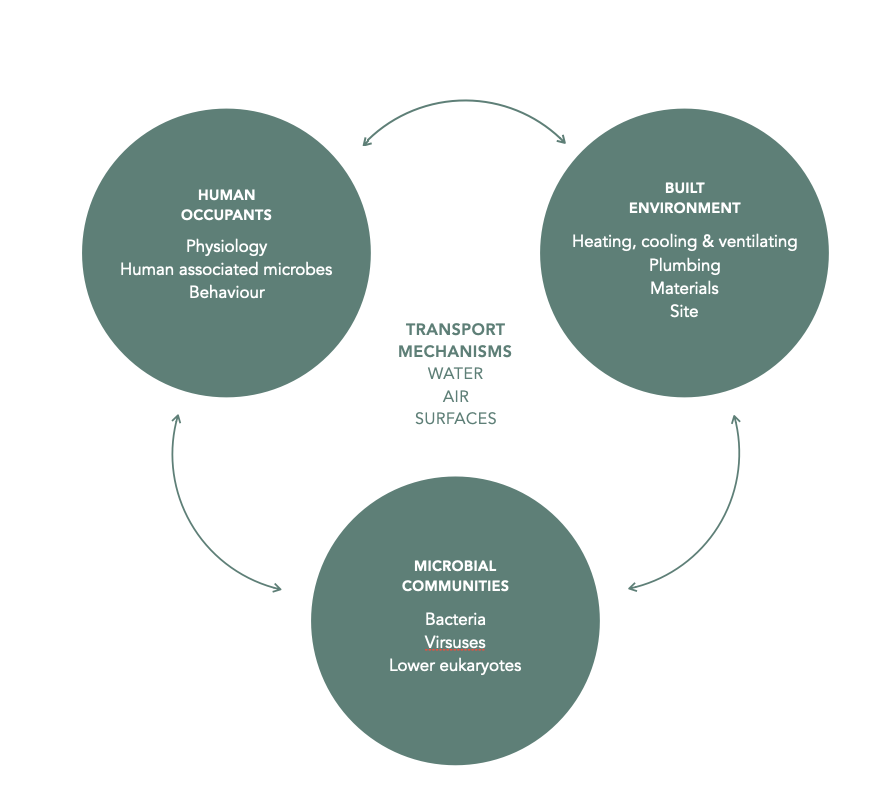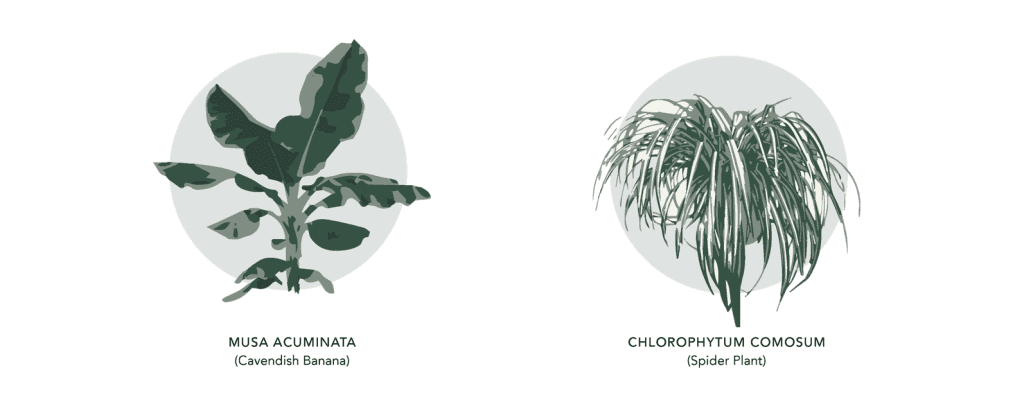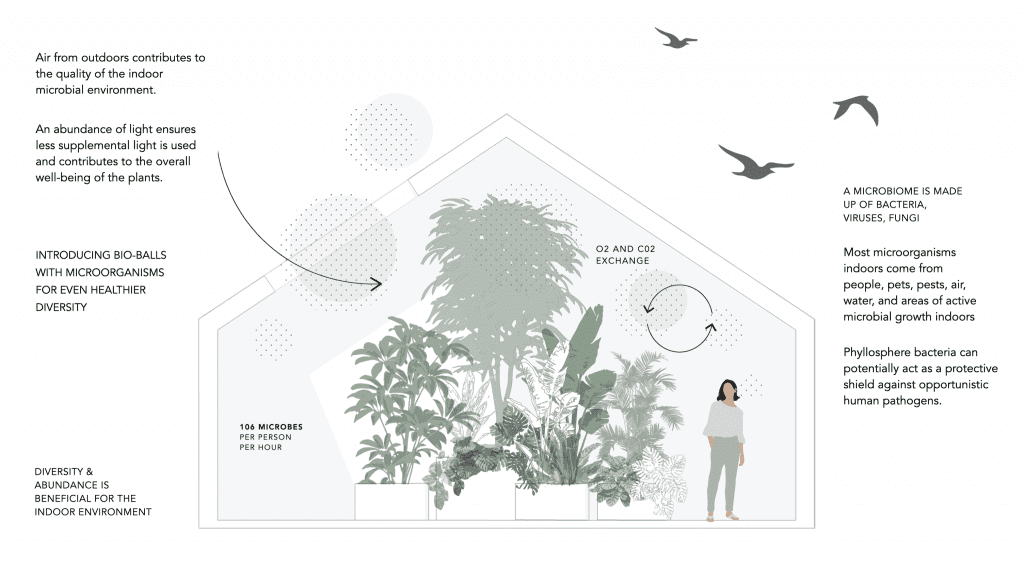09 Dec On Plant-Associated Microbiota in the Indoors
by Tessel Pool
You may think your home is your safe-haven but have you ever considered it to be more dangerous for your health than an outdoor environment? Although we have become obsessed with hygiene, there has been a recent understanding of the damage over-cleanliness can have on one’s health and the health of that environment; sanitation when taken too far can cause a healthy and diverse environment to collapse, and by diversity we are referring to microorganisms – yes, germs!
Apparently there is no overlap between microbial communities in indoor and outdoor environments. Surprisingly, when executing a study on air quality in hospitals, Jessica Green, an engineer-turned-ecologist, found that the outdoor air is full of harmless microbes from plants and soils whereas the indoor air of the hospital contained disproportionate amounts of potential pathogens (harmful microbes), which are normally rare or absent in the outdoor world (Yong, 2018). She found simply opening a window helped.
Our complete confinement to protect ourselves from the outdoor world has replaced our exposure of outdoor pollutants and, not-so-harmful microorganisms with indoor pollutants. This realization has contributed to this article, which looks into the quality of our current, indoor environments and how they can be improved through microbial exposure specifically pertaining to a plant’s diverse microbiome, an understudied topic.
What is a microorganism?
A microbe can be grouped into five major types including: Viruses, Fungi, Bacteria, Archaea and Protists, which contain both helpful and harmful variants. Most microorganisms indoors come from people, pets, pests, air, water, and areas of active microbial growth indoors (EPA, 2022).
What is the Indoor Microbiome?
The indoor microbiome differs per building and various features and conditions can impact the growth of microorganisms and their resuspension indoors (ibid). Having said this, there is insufficient evidence defining the perfect indoor microbial environment but what we do know, is that a higher diversity of microbes can improve the health of the user and the building; we are inevitably sharing our artificial indoor environments with an immense diversity of microbial life: some good but most are not so good (Mahnert et al., 2015).
Fun Fact:
“There are more bacteria on earth than stars in the universe”.
JACK GILBERT


GENERATION-INDOORS
Our lives are predominantly inhabited by indoor environments: we are born in hospitals, raised in homes or apartments, work in office buildings, shop and exercise indoors. People in industrialized and developing countries are spending around 90% of their lives indoors (Kelley & Gilbert, 2013), which has inevitably increased as a result of the Covid-19 pandemic. In fact, the amount of time that residents in The Netherlands spent indoors increased by 2% over the course of the pandemic (Our World in Data, 2022).
It started with the way buildings were designed during the energy crunch of the 1970’s with the purpose of maximising energy efficiency and the spiraling energy costs (Wolverton et al., 1989), which is still very much relevant today. Our homes are not apt to be used so frequently and today, still lack adequate systems for thermal comfort, ventilation and indoor air renewal (Domínguez-Amarillo et al., 2020).
As a result, there has been an unhealthy build-up of indoor pollutants. However, there is a recent understanding that plant-associated microbiota play a role in combating such health issues mainly through the phyllosphere (see diagram below). In fact, new evidence shows that indoor plants, beyond improvement of mood and indoor air quality, are capable of increasing the quality and quantity of the indoor microbiome (ibid).


Case study
In a relevant study two indoor plant species from different built environments were analyzed using a multiphasic approach. The plants studied provide key insights into the function of naturally occurring microbes on the leaf surface of C. comosum (spider plant) and M. acuminata (cavendish banana) and their potential implications for human health (Adi Wicaksono, W. et al. (2022).
The study made several key observations of which the most relevant, recognised that phyllosphere bacteria (those above ground) can potentially act as a protective shield against opportunistic human pathogens (ibid).
HOW CAN PLANT-ASSOCIATED MICROBES ACTUALLY CONTRIBUTE TO HEALTHIER INDOOR ENVIRONMENTS?
Our post-pandemic world embraces the work-from-home-culture, further increasing our time spent indoors. So, the focus for developers, architects and designers should regard the improvement of our buildings and cater to our indoor-centric lives by changing the way we think and design around this new lifestyle.
“Almost every design choice affects the microbial ecology of buildings, which could then affect the microbial ecology of us. Or, as Winston Churchill said, we shape our buildings and afterwards our buildings shape us” .
(Yong, 2018)
There are various ways to improve the environments in which we live, work and play. We could start for instance by by opening a window to improve ventilation, optimize our access and exposure to light by keeping the blinds open and, better regulating the thermal conditions.
More importantly, increasing the amount of greenery in the indoor environment does not only have aesthetic value but can have significant impact on human health and the built environment including, improvements in mood, mental well-being, comfort behaviour and a reduction of VOCs (Volatile Organic Compounds) as well as the removal and improvement of indoor air quality (Sriprapat et al., 2014).
Built environment practitioners can play their part and encourage healthier indoor spaces by accommodating a more diverse range of microbes. This can partly be achieved by increasing the amount of greenery introduced in a space. We can start shaping our buildings by selecting microbes that have a beneficial effect on us. This process has also been referred to as “bioinformed design” (Yong, 2018).
How to practically devise diversity in an indoor environment is by deliberately seeding buildings with microbes. Jack Gilbert, a microbial ecologist and engineer, Ramille Shah, are designing tiny plastic, 3-D printed spheres that contain a network of microscopic nooks and crannies (ibid). These spheres will be filled with useful microbes such as “fiber-digesting and inflammation quenching Clostridia as well as nutrients that nourish these microbes” (ibid). This concept referred to as the “bio-ball” is still in development but could change the game for rapidly urbanising cities.
This idea is elevated when we consider the potential of introducing bio-balls to an already-thriving indoor garden. Essentially, we could create mini-ecosystems that are abundantly thriving in indoor environments including office spaces, hospitals or even your home.
It is imperative that we encourage microbial diversity in the indoor environment to avoid pathogen outbreaks. Having said this, an excessively clean environment impairs this kind of diversity. The seed has been planted but first it is about educating the general population on the benefits of microbial diversity and moving away from the overly-clean-and-polished mindset.
Although there is still insufficient evidence on the exact volume of greenery required to make an impact on the indoor environment, we do know that plants play a role in diversifying the indoor microbiome and help combat harmful pathogens.
If you are a researcher or institution who is interested in this topic, please email info@moss.amsterdam for research collaborations.




